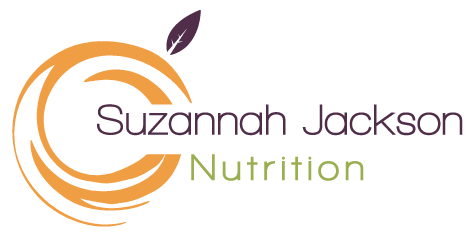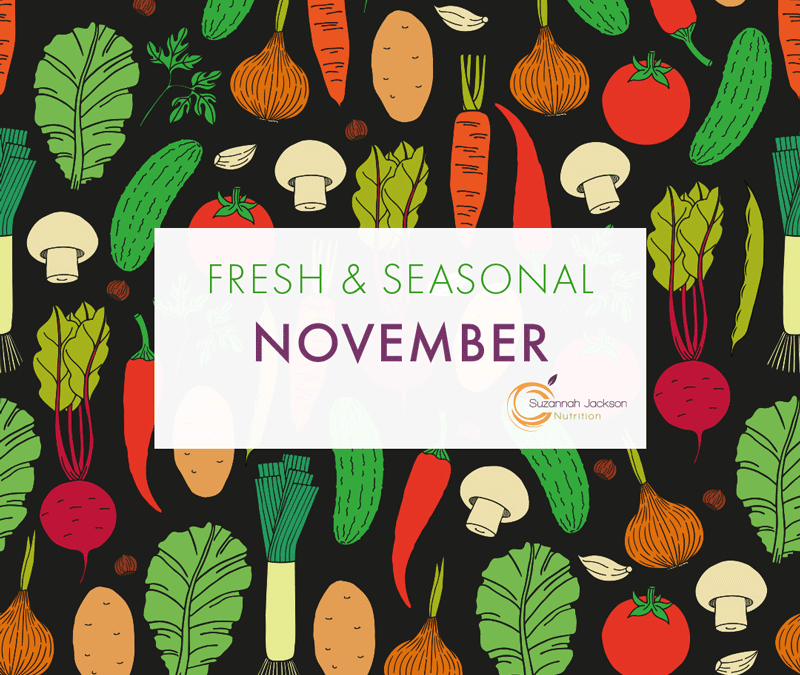In Season this month – November
Apples, artichoke, beetroot, butternut squash, cauliflower, celeriac, clementines, cranberries, leeks, parsnips, passion fruit, pears, pomegranate, pumpkin, truffles, turnips, watercress, wild mushrooms
Every month I write about the delicious fruit and vegetables that are in season but let’s take a look at some of the benefits of these foods.
Phytonutrients
Plants contain natural compounds called phytonutrients or phytochemicals known to be powerful defenders of health and studies show that eating more plant foods may reduce the risk of chronic diseases such as diabetes, cancer and heart disease.
Phytonutrients also provide functions for the plant itself such as protection from pests.
In the human body the phytonutrients help stimulate enzymes that help the body to boost the immune system, to improve cardiovascular health, to get rid of toxins and to promote healthy oestrogen metabolism.
Not only are fruits and vegetable rich sources of phytonutrients, but also whole grains, legumes, herbs and spices and nuts and seeds.
Eating the Rainbow
These phytonutrients in foods come in all different colours – red, yellow, orange, green, purple and white and in order to promote good health, it is important to eat fruits and vegetables of a variety of colour on a daily basis
The first basic step to develop a healthy way of eating is to start with colour

This month let’s take a look at the benefits of Orange Foods:
ORANGE
Orange foods help to protect the immune system, eyes and skin and reduce the risk for cancer and heart disease.
Orange foods such as carrots contain the compound beta-carotene which can turn into vitamin A in the body which helps promote healthy vision as well as supporting the immune and inflammatory system and bone health.
Most food sources of vitamin A are of animal origin, such as seafood, eggs, fish, and dairy products like yogurt, milk, and cheese. Therefore, if you are a vegan it will be essential for you to eat high-carotenoid-containing foods which tend to be colourful and of the red, orange, yellow, and green varieties.
To get the most amount of carotenoids like beta-carotene from your food, cooking
foods like carrots is important. Cooking carotenoid-containing vegetables that are higher in fibre require the heat from cooking to free the compound. Carotenoids are “fat-soluble”
or they require the presence of fat to become more available to the body. Therefore, having a bit of cooked carrots drizzled with olive oil or a dash of butter would be the ideal combination to maximize getting the beta-carotene in the carrots to be absorbed in the gut.
Bioflavanoids are another group of phytonutrients associated with orange-coloured foods.
Bioflavonoids are found in oranges, grapefruit, tangerines, clementines, peaches, nectarines, and even yellow-colored foods like lemons and pineapple.
In contrast to beta carotene, bioflavonoids are water-soluble, so they don’t require cooking to release the compound.
Bioflavonoids work together with vitamin C to reduce the risk of heart attacks and
cancer, and help maintain strong bones/teeth, healthy skin, and good vision.
It is often the case in nutrition that you see vitamins, phytonutrients, and minerals working together to create the best effect!
Don’t forget to check me out on Instagram@suzannahjacksonnutrition and facebook for even more health tips and recipes.
Ways to include more orange foods:
- Eat a sweet potato instead of a baked potato
- Add turmeric powder to your curry or stir fry
- Make a delicious butternut squash and carrot soup

